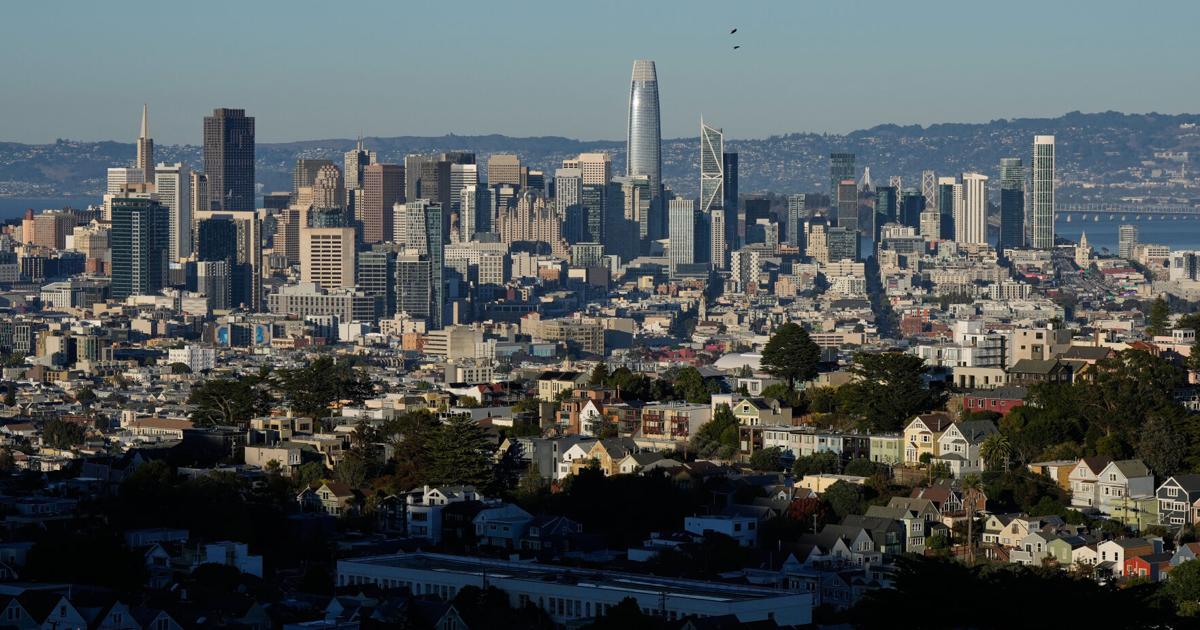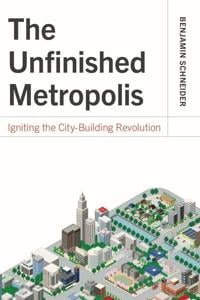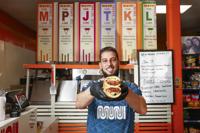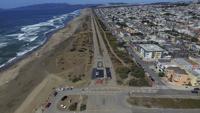How has San Francisco changed?
And therein lies the problem. But after a decades-long development drought, change is afoot in San Francisco and other cities all facing varying shades of the same problems.
Schneider, a San Francisco native, delved into the past, present and future of American cities at a time when many are rethinking the very fabric from which they are made — be it where and what type of housing is built, or even whether a beachside highway should be a park.
The Examiner sat down to talk about the book with Schneider, who will appear at a Nov. 15 event at The Book Passage in the Ferry Building with former San Francisco Chronicle Critic John King.
The following conversation was edited for clarity and, if you can believe it, brevity.
San Francisco native Benjamin Schneider’s new book delves into the past, present and future of American cities at a time when many are rethinking the very fabric from which they are made.
Courtesy of Benjamin Schneider
Start with your interest in urbanism and how it was formed. Is this something that you fell in love with as a child wandering through the mean streets of San Francisco, or was it a passion that you found later in life? It was very much a passion that I cultivated growing up in San Francisco, being very curious about The City and how it worked. Being a great lover of maps, too, was a big part of my interest in urbanism.
My San Francisco origin story is just so central to my identity as an urbanist, both my love for beauty and all the amazing things about it and then my frustration with the things that don’t work so well, and my sense, I think from a pretty young age, that San Francisco is in many ways kind of a time capsule of another era and that there hasn’t been so much change in terms of how the city functions or looks in most neighborhoods in many decades.
I always thought it was funny when I would meet people from other places, when I’ve lived in other cities, and I tell people I’m from San Francisco. They always ask me about how much it’s changed, and I kind of developed different ways of responding to that, but I would say it has changed demographically quite a bit, but actually the built environment hasn’t changed much at all, and I think those two things are pretty connected.
That’s a big part of what I was initially interested in and what I’m kind of trying to put forward in this book.
In what ways has it changed that stand out to you? And then what stands out to you as a grand symbol of that static part of The City? The area kind of in and around downtown has changed a lot, mostly kind of South of Market … and then of course, Mission Bay, Dogpatch, those areas are unrecognizable from what they were 20 years ago. I think that’s largely for the good.
That’s where a lot of San Francisco’s housing has gone up, including most of its affordable housing, in those neighborhoods. It’s sort of a case study for how San Francisco can grow and evolve and still be San Francisco in many of those neighborhoods.
But what’s just as notable is how, if you look at how much those neighborhoods have changed, it’s just as notable to look at how exceptional they are compared to the rest of The City. If you go north or west from that zone of The City, there’s exceptionally little kind of new construction.
This is taking kind of a grand historical perspective, but if you look at other cities around the world or even some cities around the country, it’s pretty unusual that you’d have a major city with so much of its area that hasn’t really seen much new construction at all or new transit investments at all. That is a pretty exceptional state of being for a city, to have that kind of stasis for a century or more.
Explain that stasis for me. Why did America stop evolving, at least within the confines of its cities? It’s a complex story, but there’s a few big forces.
I think the biggest is probably the rise of car dependency and zero-sum mentality that that leads to in terms of planning. As cars kind of became the default mode of transportation for everyone — or at least imagined, and especially among the people with the most money and power — then you have a situation where like any new development could presumably cause traffic or parking to get worse. So that creates an automatic skepticism of any kind of change. Then likewise for carving out space on the street for a bus lane or for a bike lane that challenges car dependency, car supremacy, and is also looked upon with skepticism.
And then also the legacy of urban renewal and freeway construction in the midcentury era. This is something I get into quite a bit in the book. That was such a brutal and destructive time that was deeply harmful, and many of these extremely expensive and disruptive projects didn’t yield very many benefits ultimately. It produced a knee-jerk skepticism of transformative urban development projects, that the government is not capable of spearheading visionary transformations of the built environment. We’re living with that legacy still.
How has San Francisco changed? On the whole, not all that much, according to Benjamin Schneider, a former Examiner journalist and author of the new book “The Unfinished Metropolis: Igniting the City-Building Revolution.”
Courtesy of Island Press
Live entertainment, music, dancing and lots of colors are coming to The City
“Muni has such a huge, huge, huge following. Like, a genuine love,” said Saleh Albowyha, proprietor of the popular M Stop Deli on SF’s south side
San Francisco Public Library show features performances from artists whose albums are being added to free music service, Bay Beats
I think what you just spoke about illustrates why people have skepticism of relinquishing local control. How can a city like San Francisco trust a state government, or a federal government, to plan its future? It’s a very understandable concern that people have. It has to start with a commitment that if we’re going to do big things in American cities, we’ve got to do it better than we have in the past, and, you know, there has to be some level of community engagement and process and obviously environmental process — all that stuff matters. It’s not like it should just be cast aside, but the sort of status quo right now is that those kinds of processes are so cumbersome that they basically prevent anything from happening.
Starting from certain values that guide urban development, that development should be for the masses. It should be available to people of different income levels, and it should promote sustainable communities and promote good design and make life easier for people, make it easier for them to get to school, to the grocery store, to the doctor. I think this is all a very big, big vision that I think we’re a long way from getting to, but I do think those values need to be wrapped up in the concept of urban development.
I want to circle back to car dependency since you mentioned it. How do we undo that both from a literal physical perspective but also from a political perspective? We just saw a supervisor in San Francisco recalled for daring to close a 2-mile stretch of a single highway in his district. Well, how do we do this? We’ve done it, is the short answer.
For all the ragging I do on San Francisco [for] not changing, perhaps the most dramatic transformation that it has undertaken in living memory is the removal of the Embarcadero and Central freeways and then, very recently, the transformation of the Great Highway into a park.
These are huge achievements and huge transformations of The City. Now, the Embarcadero Freeway and Central Freeway, it’s been many years now that those have been down and the area that that previously was occupied by the freeway has been filled in by parks and by housing and other stuff. You can see how much of an improvement it is. It’s just an objective reality that this is a better way to use urban space.
The transformation of a 2-mile portion of Great Highway into Sunset Dunes Park is one of San Francisco’s “most dramatic … in living memory,” author Benjamin Schneider says.
Godofredo A. Vásquez/Associated Press
Yes, there was the recall of Supervisor [Joel] Engardio, that was a pretty big backlash to this development, just as Mayor Art Agnos did not win a second term after taking down the Embarcadero Freeway … there are these leaders who make these big decisions to transform the built environment who are going to suffer for it, but it’s so predictable how history vindicates these kinds of decisions to take out car infrastructure in favor of human infrastructure.
Through all of your travels, were there any proposals that exemplified the type of reimagining that is needed to move our cities forward? What’s got you excited? Portland, Ore. has legalized “missing-middle” housing for the longest, basically of any, any major American city, and they’re really seeing the fruits of that come to fruition.
If you walk the streets of Northeast Portland, you’ll see these very subtle transformations of lots where there’s a normal-looking house, but then behind it you can see three other houses just barely. And the city recently came out with data showing that the new homes that have been built through the missing middle ordinance are on average $200,000 to $300,000 cheaper than the existing homes in those neighborhoods. So it’s this sort of instant kind of middle-class housing solution that could and should happen everywhere.
California has laid the groundwork for this. This is basically allowed now in California, but I think there’s still a lot of loopholes to close to make it a reality.
Missing middle housing — that’s the next stage of suburban-style, single-family homestyle development in American cities, and you can see it in Portland, and it’s not that scary. It looks nice, it instantly kind of creates affordability for the middle class. I don’t want to oversell it. It’s not like this is going to solve the housing crisis, but it helps a lot for people to get a foothold into the housing market and, and have somewhat more diversity economically and socially in these neighborhoods than in their current state. They’re rich neighborhoods. You can’t live in a single-family home in a major city without having a lot of money or having owned it for 50 years.
On the transportation front, I would actually point to San Francisco as a really successful example of bus best practices. I wish we had more money to do more transformative stuff like extending the Central Subway to North Beach and Fisherman’s Wharf, or building the Geary Subway, that we really need.
But in the meantime, The City has done a really impressive job under [former] SFMTA head Jeff Tumlin over the last five or so years, just making space for buses to have their own lanes on city streets, extending out those those bus bulbs at bus stops so buses don’t have to merge in and out of traffic, [and the all-door boarding policy] makes boarding happen really fast. These are things that don’t really exist in other American cities.
There’s no good reason why that shouldn’t be the sort of state of bus travel everywhere in the U.S.
A Muni bus drives in front of the skyline in San Francisco, Monday, June 23, 2025.
Jeff Chiu/Associated Press
I don’t know that there’s a specific call to action in the book for the individual reader, but, what can we do as regular folks? If you care about these issues — if you care about affordability and transportation and safety in your neighborhood and in your city — then those things should be central to your politics, to your political identity. You should think about the candidates that you support, the issues that you fight for, the organizations you volunteer for and donate to.
You should look at those through the prism of, “How does this move the needle on the sort of urban issues that are meaningful to me?” I hope that, if that kind of way of looking at politics can spread beyond the sort of local political level, that’s when you can start to build the momentum for state- and national-level leaders to push for even more ambitious, really transformative kinds of policies that could really kick off a new era of, let’s say, subway building in American cities, or a new affordable social housing initiative at the federal level that could provide many billions of dollars for this kind of thing — a new kind urban renewal, but not sh—y. Renewal 2.0, where transit station parking lots, other kinds of surplus government property [like] former military bases, are developed by the government into mixed-income housing and urban walkable communities that are a net positive for the city and the people, rather than tearing things down.
Just keeping thinking of these issues as central to politics and not to the side is really important, I think eventually that can help produce some real change in these areas.








